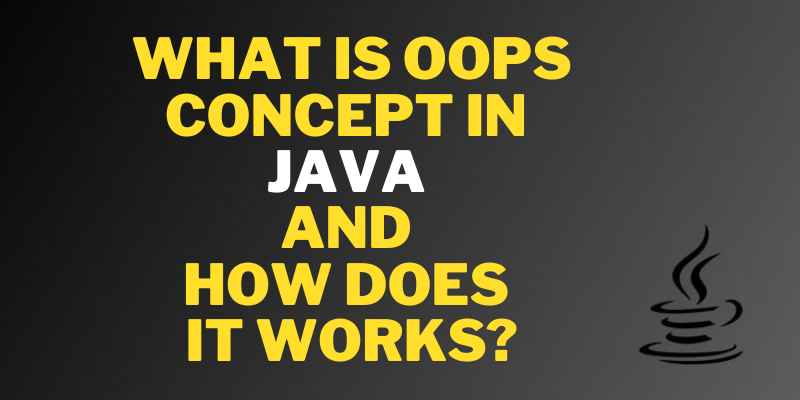
What is Java?
Java is a programming language that focuses on objects. In Java, everything is linked to classes and objects, their characteristics and methods. This blog will discuss OOP Concepts and how it works in Java. Java Training in Chennai will enhance your programming skills in Java.
Definition of OOP Concepts in Java
Abstraction, encapsulation, inheritance, and polymorphism are critical concepts in Java’s Object-Oriented Programming (OOP). Working methods and variables can be created using Java OOP concepts, and then all or a portion can be reused without compromising security. Understanding OOP ideas is critical to comprehending how Java works.
How OOP Concepts in Java Work
Java’s OOP concepts allow programmers to construct components that may be reused in various ways while remaining secure.
How Abstraction Works
Abstraction allows programmers to design tools that are both helpful and reusable. For example, a programmer can create various objects, such as variables, functions, and data structures. Programmers can create other classes of things to define the items.
An address, for example, is a type of variable. Each address object must have a name, street, city, and zip code, according to the course. Employee addresses, customer addresses, or supplier addresses can be the items in this situation.
How Encapsulation Works
We may reuse functionality without sacrificing security thanks to encapsulation. In Java, it’s a solid and time-saving OOP notion. For instance, we could write code that retrieves specific data from a database. Reusing that code with other databases or processes could be beneficial. Encapsulation allows us to do so while maintaining the privacy of our original data. It also allows us to change our original code without breaking it for others who have already adopted it.
FITA Academy offers the best Java Online Course with Placement Assistance and worthy certifications.
How Inheritance Works
Another time-saving Java OOP concept is inheritance, which allows a new class to inherit the properties of an existing one. The inheriting type is referred to as a subclass or a child class. The initial course is frequently referred to as the parent. The keyword extends used to create a new class that inherits properties from an existing one.
How Polymorphism Works
In Java, polymorphism refers to a parent class’s influence on a child class’s object. We could make a “horse” class by expanding the “animal” class and opening the “animal” class. The “professional racing” class could also be implemented in that class. Because it inherits attributes from both the “animal” and “professional racing” classes, the “horse” class is “polymorphic.”
Two more examples of polymorphism in Java are method overriding and method overloading. The child class can leverage the OOP polymorphism notion to override a form of its parent class in method overriding. This allows a programmer to utilise the same way differently, depending on whether the process is called by a parent class object or a child class object.
A single method can perform many purposes depending on the environment, which is called method overloading. This means that depending on the inputs supplied, it may behave differently.
Conclusion:
So far, we have discussed the oops concept in Java and how it works. And to know more about Java core concepts and documentation comment in Java join Java Training in Coimbatore.
